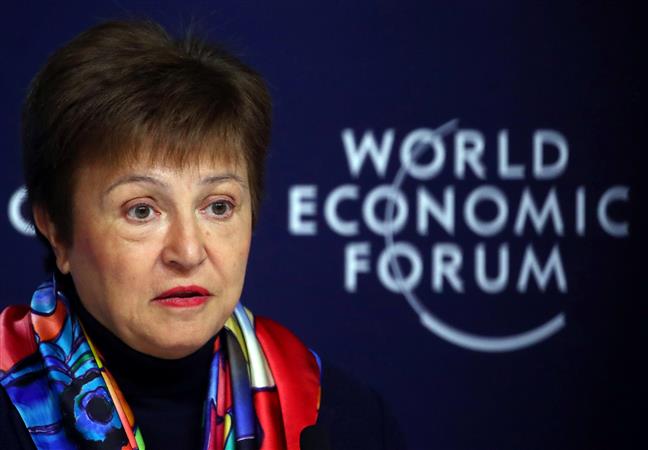United Nations: Drastically slashing India’s growth estimate to 4.8 per cent for the current fiscal year, the International Monetary Fund Monday blamed its economic slowdown for a “lion’s share” of its cut of 0.1 per cent to global growth projections.
The International Monetary Fund’s World Economic Outlook (WEO) Update cut the global economic growth projections made in October by 0.1 per cent for last year to 2.9 per cent and to 3.3 per cent for the current year.
“A more subdued growth forecast for India accounts for the lion’s share of the downward revisions,” the IMF said. The slashing of India’s growth projections follow downward trend from 7.5 per cent at this time last year to 6.1 per cent last October.
The WEO Update released in Davos, where the World Economic Forum is meeting, however, indicated that India may be turning around after what it had said was one of the “negative surprises.”
In the next fiscal year, India’s growth rate is expected to increase by 1 per cent to 5.8 per cent and to 6.5 in 2021-22. Despite the cuts for India, it is the second-fastest growing major economy in the world after China this year and the next, and it is expected to overtake China in 2021.
China’s growth rate projections are 6.1 per cent for 2019, 6 per cent in 2020 and 5.8 per cent in 2021. India is also doing better than the once-roaring Asian tigers of the ASEAN, whose economic growth was estimated at 4.7 last year and projected to increase to 4.8 this year and 5.1 per cent next year, the IMF said.
The growth rates of advanced economies are dismal in comparison, although given their level of development, the low growth will not have the same impact as the slowdown would have on an economy like India. The developed countries are estimated to have grown at 1.7 per cent last year and projected to grow at 1.6 per cent this year and the next.
The IMF estimated growth rate of Germany last year at 0.5 per cent, the United States at 2.3 per cent, and Japan at 1 per cent. Despite Brexit fears, Britain’s growth was estimated at 1.3 per cent last year, and projected to grow to 1.4 per cent this year and 1.5 per cent the next.
The IMF said the reason for the downgrade of India’s growth rates is that “domestic demand has slowed more sharply than expected amid stress in the non-bank financial sector and a decline in credit growth.”
The IMF gave India the lowest growth projections of the three made by international organisations this month — all of which downgraded it from previous estimates. The World Bank estimated India’s growth rate to be 5 per cent for the current fiscal year, while the UN put it at 5.7 per cent.
The IMF said that globally, “trade policy uncertainty, geopolitical tensions, and idiosyncratic stress in key emerging market economies continued to weigh on global economic activity — especially manufacturing and trade — in the second half of 2019.”
It added, “Intensifying social unrest in several countries posed new challenges, as did weather-related disasters.”
Despite these, IMF said “Some indications emerged toward year-end that global growth may be bottoming out.”
At the same time, it cautioned, “Downside risks, however, remain prominent, including rising geopolitical tensions, notably between the United States and Iran, intensifying social unrest, further worsening of relations between the United States and its trading partners, and deepening economic frictions between other countries.”
